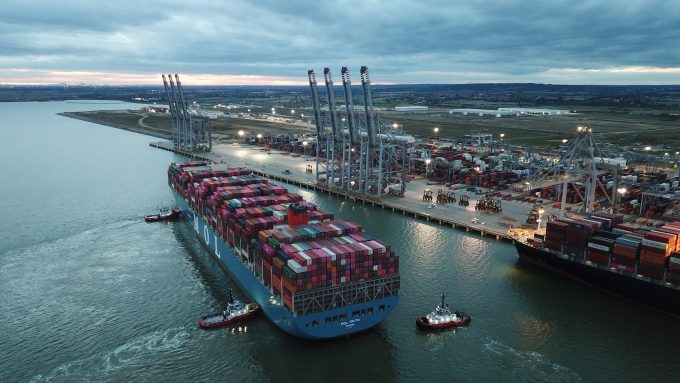Container spot rates have peaked as all major trades see prices fall
There was more evidence in this week’s container port freight markets that peak prices on ...
TFII: SOLID AS USUALMAERSK: WEAKENINGF: FALLING OFF A CLIFFAAPL: 'BOTTLENECK IN MAINLAND CHINA'AAPL: CHINA TRENDSDHL: GROWTH CAPEXR: ANOTHER SOLID DELIVERYMFT: HERE COMES THE FALLDSV: LOOK AT SCHENKER PERFORMANCEUPS: A WAVE OF DOWNGRADES DSV: BARGAIN BINKNX: EARNINGS OUTODFL: RISING AND FALLING AND THEN RISING
TFII: SOLID AS USUALMAERSK: WEAKENINGF: FALLING OFF A CLIFFAAPL: 'BOTTLENECK IN MAINLAND CHINA'AAPL: CHINA TRENDSDHL: GROWTH CAPEXR: ANOTHER SOLID DELIVERYMFT: HERE COMES THE FALLDSV: LOOK AT SCHENKER PERFORMANCEUPS: A WAVE OF DOWNGRADES DSV: BARGAIN BINKNX: EARNINGS OUTODFL: RISING AND FALLING AND THEN RISING

Container spot rates on the transpacific suffered again this week: Asia to the US east coast slumping by $250 per 40ft.
Following an 11% fall last week in spot rates to US west coast ports, this suggests the demand spike brought about by US importers looking to beat the 25% tariffs on Chinese goods in January has abated on the trade.
At its peak it saw volume growth of around 13%, year on year.
“Peak season this year is as much about getting to port before the 1 January tariffs as it is about getting to the shelves before December 25,” said Freightos chief executive Zvi Schreiber.
This week’s Shanghai Containerized Freight Index (SCFI) recorded a decline of 6.8% for its US east coast component to $3,403 per 40ft, while from Asia to the US west coast, there was a further 2.5% erosion to $2,190 per 40ft.
All eyes are now on the G20 summit in Argentina this weekend when “sparks could fly” when presidents Trump and Xi meet.
“If tariffs are slapped on products so far spared, the subsequent rush to pre-stock will extend the peak season to February,” said Mr Schreiber.
Elsewhere, the Asia to Europe components of the SCFI were stable this week, with North Europe edging up by 1.2% to $747 per teu and the Mediterranean ahead by 3.7% to $783 per teu.
Ocean carriers on the route have announced FAK increases for North Europe and Mediterranean ports from tomorrow, 1 December, with for example CMA CGM hiking its North Europe 40ft to $2,000 per 40ft after slashing it by $200 at the end of September.
However, most analysts The Loadstar has spoken to don’t expect the rate increases to succeed, given the 2M’s reactivation of its AE2/Swan loop on 8 December, which will add up to 20,000 slots a week to the market.
Meanwhile, Rotterdam-sourced IFO 380 heavy fuel oil (HFO) fell another $8 per tonne today, to $362, with the price of bunkers sliding by 23% in the past six weeks, tracking an unexpected slump in global oil prices.
Carriers, whose results in 2018 have been adversely impacted by a year-on-year jump in HFO, to an average of $450 per ton, will enjoy the benefit of the drop in fuel prices in the first quarter of next year, although with planned OPEC production cuts, the “respite might prove temporary”, suggested Alex Younevitch, managing editor, freight markets, at S&P Global Platts.
“As the new global sulphur cap nears, the market faces tough questions on how the upcoming volatility will be handled, and who will bear the brunt of the bigger bunker fuel bills,” he added.
He noted there was a “rising scepticism” in the market concerning fuel surcharge calculations made by container lines.
Carriers are proposing to roll out their new bunker surcharge mechanisms on 1 January in readiness for the IMO 2020 0.5% sulphur cap regulations a year later.
Comment on this article